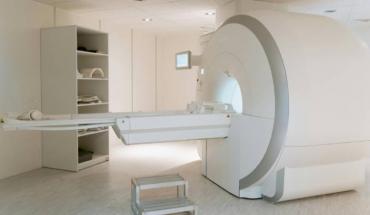Lymphatic Malformations
What is a lymphatic malformation?
A lymphatic malformation is a mass in the head or neck that results from an abnormal formation of lymphatic vessels. Lymphatic vessels are small canals that lie near blood vessels and help carry tissue fluids from within the body to the lymph nodes and back to the bloodstream.
There are two main types of lymphatic malformations:
-
Lymphangioma - a group of lymphatic vessels that form a mass or lump. A cavernous lymphangioma contains greatly enlarged lymphatic vessels.
-
Cystic hygroma - a large cyst or pocket of lymphatic fluid that results from blocked lymphatic vessels. A cystic hygroma may contain multiple cysts connected to each other by the lymphatic vessels.
Nearly all cystic hygromas occur in the neck, although some lymphangiomas can occur in the mouth, cheek, and tissues surrounding the ear, as well as other parts of the body. Lymphatic malformations are present at birth, but they are sometimes not detected until the child is older. Some lymphatic malformations can spread into surrounding tissues and affect the proper development of the area. Lymphatic malformations may also enlarge and become infected following an upper respiratory infection.
Lymphatic malformations are sometimes seen in children with certain chromosome abnormalities and genetic conditions, including Down syndrome and Turner syndrome.
What causes a lymphatic malformation?
A lymphatic malformation is a congenital (present from birth) defect that occurs during early embryonic development when the lymphatic vessels do not properly form. The vessels may become blocked and enlarged as lymphatic fluid collects in the vessels, forming a mass or a cyst.
What are the symptoms of a lymphatic malformation?
An internal lymphatic malformation in the mouth or cheek may not be noticed until it becomes infected and enlarges. Cystic hygromas can grow very large and may affect breathing and swallowing. The following are the most common symptoms of a lymphatic malformation. However, each child may experience symptoms differently. Symptoms may include:
-
A mass or lump in the mouth, cheek, or tongue beneath the mucous membrane that lines the area
-
A large, fluid-filled mass to the lower side and back of the neck under the platysma muscle (a thin, flat muscle that extends from the upper chest to the jaw)
The symptoms of a lymphatic malformation may resemble other neck masses or medical problems. Always consult your child's physician for a diagnosis.
| |
| Click Image to Enlarge |
How is a lymphatic malformation diagnosed?
During pregnancy, a fetal ultrasound may detect some large lymphatic malformations. Ultrasound is a diagnostic tool used to evaluate organs and structures inside the body with high-frequency sound waves. After birth, diagnosis of a lymphatic malformation is generally determined by a physical examination. In addition to a complete medical history and physical examination, diagnostic procedures for a lymphatic malformation may include the following:
-
Transillumination - a method of examination by the passage of light through tissues to assist in diagnosis. The light transmission changes with different tissues.
-
Computed tomography scan (also called a CT or CAT scan) - to determine if other organs are connected to the malformation. A CT scan is a diagnostic imaging procedure that uses a combination of X-rays and computer technology to produce horizontal, or axial, images (often called slices) of the body. A CT scan shows detailed images of any part of the body, including the bones, muscles, fat, and organs. CT scans are more detailed than general X-rays.
Treatment of lymphatic malformation:
Specific treatment of lymphatic malformation will be determined by your child's physician based on:
-
Your child's age, overall health, and medical history
-
Extent of the condition
-
Your child's tolerance for specific medications, procedures, or therapies
-
Expectations for the course of the condition
-
Your opinion or preference
Treatment may include:
-
Observation of the malformation (to watch for growth or changes)
-
Antibiotic medications (to treat infection)
-
Incision and drainage of the lesion
-
Surgery (to remove the lymphatic malformation)
A small percentage of lymphangiomas can regrow and are often detectable within a year after surgery. Regrowth is more likely with larger and more complicated malformations.
Related Questions
Chicken pox
- 3220 Days ago
- Child Health
Infant Self Stimulation
- 3257 Days ago
- Growth & Development - Child Health
Pediatric Cardiac oparation
- 3268 Days ago
- Growth & Development - Child Health
Speech therapy
- 3297 Days ago
- Child Health
My weight is 40 kg
- 3641 Days ago
- Child Health
Precaution during new teeth arising
- 3644 Days ago
- Child Health





















